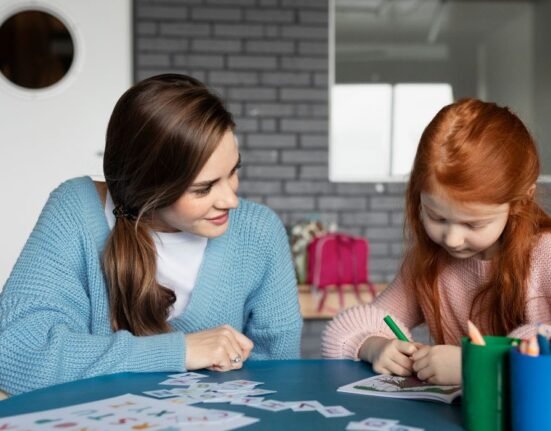Storytelling is the most Favourite medium to convey narratives, share experiences with people (Individual or group ) using a nicely structured format with a proper beginning, middle and end. It’s an enjoyable hobby that is suitable for all personality types, whether introvert or extrovert. It can be expressed in the form of creative writing, oral storytelling, suitable for today’s lifestyle, and digital storytelling. Every form of Storytelling enhances our imagination and conceptual thinking. A fact wrapped in a story is 22 times more pronouncement than that fact, according to cognitive psychologist Jerome Bruner, as cited in an insight demand presentation. He also quoted “we are storytelling creatures, and as children we acquire language to tell those stories that we have inside us.” Jerome Bruner, Actual minds, Possible worlds(1986)
Read More: How Does Storytelling Transform Mental Health?
Conceptual Thinking
It is an individual’s ability to understand abstract concepts or hypothetical situation to solve real life situations to solve their real-life issues. For example, let’s say a school principal gives a task to a teacher of a specific subject to create a new and unique study method for low-achieving students. If the teacher thinks conceptually, they may think about ‘why’ this task? What are its important goals for this task? They would think about various versions of the plan, extract methods from other teachers and finally, they create a unique, innovative and valuable for the same. Conceptual skills involve several skills in one, like problem-solving, logical thinking, communication skills, critical thinking, time management, etc.
Conceptual thinking and storytelling are interrelated terms; conceptual thinking involves creating a description to communicate sophisticated concepts effectively. Connecting concepts and stories, one can help individuals to understand, remember & connect with the complex information at the emotional level. Storytelling is not only a creative medium, rather it also unknowingly reinforces conceptual thinking with the strengthening of pattern recognition, empathy, problem solving, etc.
Read More: 10 Effective Time Management Techniques, According to Psychology
How Storytelling Boosts Conceptual Thinking
1. Builds a Structured Cognitive Process
Every story has a beginning (setup) in which the brain establishes context by talking into and about characters, setting and the initial stage. Confrontation (middle) in this part story introduces conflict that creates cognitive tension and reminds us to engage more deeply to predict the outcome. The resolution in this part, when conflict is resolved it provides a sense of closure and allows the brain to connect new information into a person’s existing knowledge structure. This tool(storytelling ) is so powerful that it can influence our beliefs, shape identity by providing an organised and meaningful way.
Read More: How to deal with a Conflict?
2. Follows Pattern Recognition and Symbolism
Pattern recognition is the natural human tendency to identify repetitive elements, structures to understand a story. When a person understands and recognises the pattern in the story, they start to connect these in their real-life situations. Stories present a sequence of events where one action leads to another. This is a fundamental pattern the brain uses to process information.
A story about a homeowner pressured into a complex mortgage (the cause)and later defaulting (the effect) makes a complex financial crisis easier for an audience to understand and relate to. Symbols can be very small elements of a story, like a wedding ring that symbolises commitment, or they can even be the primary plot driver, like a natural disaster that symbolises the global threat of climate change.
3. Enhancing Empathy and Perspective
Empathy is stepping into others’ shoes means to understand others’ emotions, feelings, etc Research shows that storytelling triggers mirror neurons along with stimulating areas involved in perspective-taking taking such as the medulla and prefrontal cortex. These regions help us to imagine others’ thoughts & intentions, enhancing our cognitive empathy. Engaging with emotional stories activates the limbic system, including the amygdala and anterior insula, which are central to emotional processing.
It allows us to explore multiple characters of the story and their mindset & emotions. This process builds empathy that helps us to understand different viewpoints. Reading or telling a story from a refugee’s first-person perspective allows one to walk in their shoes, fostering empathy for that individual‘s struggle and providing a deeper, more personal understanding than factual data alone.
4. Boosting Creativity and Imagination
Storytelling boosts creativity and imagination well where imagination should be used as a mental playground, where one can ask some imaginary questions to oneself to explore the hero of the story in different situations. This mental exercise allows them to boost creative ideas and imagination in their mind; both elements are important for conceptual thinking. When a child listens to the story of an elephant in trouble, they would be able to imagine the situation, and if we allow their mind to create the story, they will learn to complete the story by their imagination..
5. Encourage Problem-Solving Skills
Storytelling is the powerful medium to encourage problem solving skills along with mental growth, I a character of the story is in dilemma, moral conflicts and decision making listener tend to engage in problem solving and analysis of the situation, they explore how character navigate the challenge it encourage individual too think criticality about probable solutions stories expose audience to different viewpoints and emotional experience that expand their understanding and empathy that is crucial aspect for effective problem solving. Example in math word problems teacher embeds math concepts into stories, like two rabbits jumping in the garden, two more joined them, how many rabbits are nibbling on carrots now?
6. Real-life Applications
People around the world practice storytelling in their day-to-day lives in many ways, whether it is used for making sense of experience, building relationships, communicating knowledge, creating identity or creating emotional connections. Almost everyone uses storytelling for various reasons, like:
- A Psychologist used to explore covered psychological patterns
- Educators used to make concepts
- Leaders around the world used to inspire the audience
- Parents used to make their children busy and teach them moral values
- Spiritual mentors used to listen to spiritual lectures
A school teacher often starts a lesson with a beautiful and interesting story. By this method, children connect in the class and students understand the concept very well in their mind, which will be retrieved in the situation where this information is needed.
Storytelling as a hobby enhances an individual’s communication, critical thinking, persuasion and other important cognitive processes.
Conclusion
Storytelling is not only a creative framework with a proper beginning, middle and end that makes individuals understand the scenario and analyse it and understand causal relationships in the story, but it is a mental exercise that trains our brain to use symbols and imagination in our daily life. People around the world use storytelling as a hobby to make people more connected and make tough concepts easily understandable. In essence, it can be understood that storytelling is the most favourable tool that has been used by people for centuries.
It is a useful hobby that leads us to think out of the box and boost our cognitive processes, like imagination, critical thinking, creativity, problem-solving, pattern recognition, etc. Collectively, these cognitive processes strengthen an individual’s conceptual thinking. Storytelling should be encouraged in the workplace, educational setting and at home can help us to develop not only empathy, imagination, but also help us in complex cognitive development.
References +
https://doi.org/10.1146/annurev-psych-120709-145406
Green, M. C., & Brock, T. C. (2000). The role of transportation in the persuasiveness of public narratives. Journal of Personality and Social Psychology, 79(5), 701–721.
Mar, R. A. (2011). The neural bases of social cognition and story comprehension. Annual Review of Psychology, 62, 103–134. https://doi.org/10.1146/annurev-psych-120709-145406
Graesser, A. C., Olde, B., & Klettke, B. (2002). How does the mind construct and represent stories? In M. C. Green, J. J. Strange, & T. C. Brock (Eds.), Narrative impact: Social and cognitive foundations (pp. 229–262). Lawrence Erlbaum Associates.
Bruner, J. (1990). Acts of meaning. Harvard University Press.













Leave feedback about this